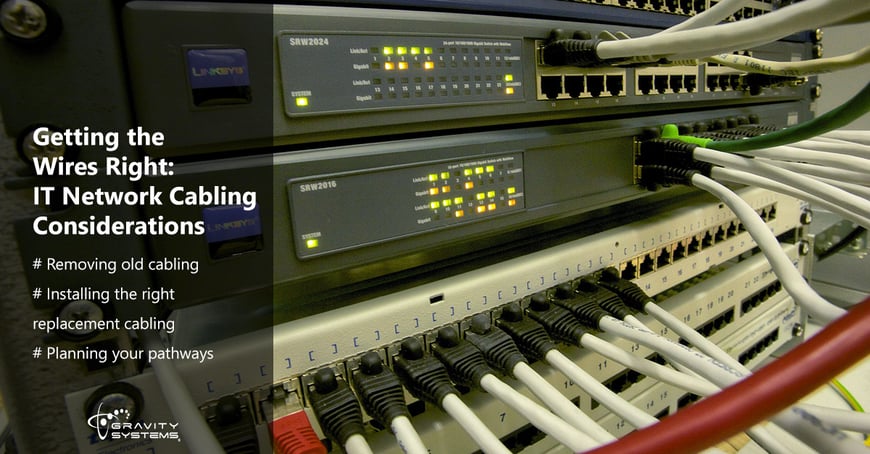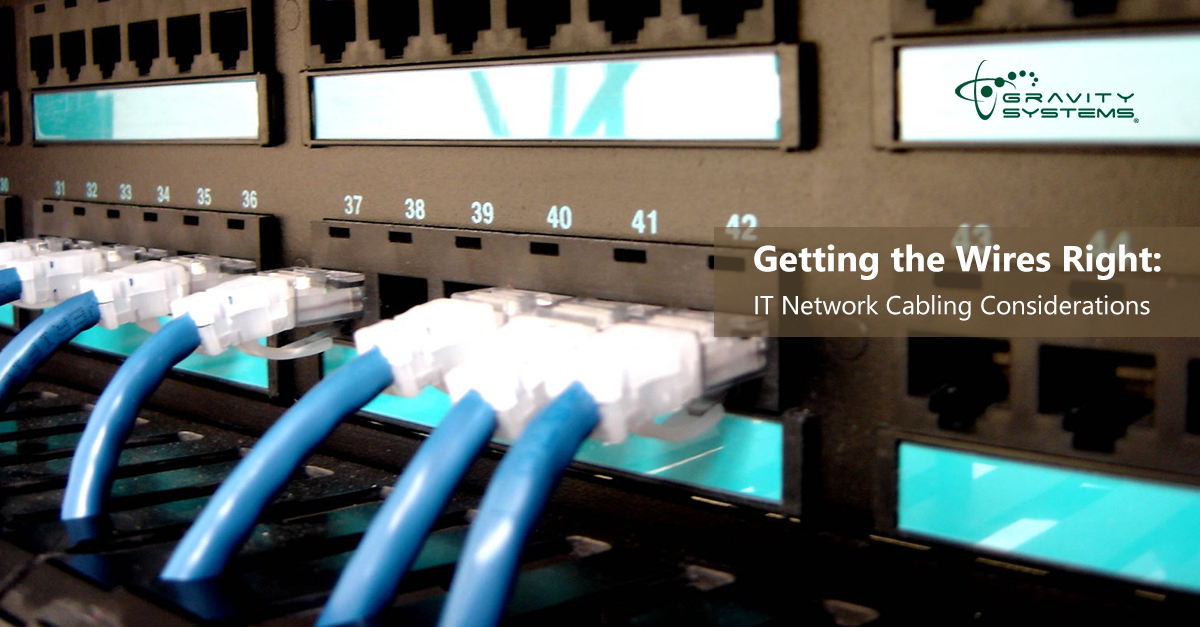Up to four-fifths of all IT network problems are related to cabling issues. Those cables connecting your devices may not look special, but they play a critical role in keeping your system running. Let's look at important considerations in ensuring that cabling is up to the job, courtesy of your Austin IT support experts at Gravity Systems.
Removing old cabling – How much of your current cabling is still usable, and how much of it needs to be junked? Get those cables tested to check for crosstalk and glitchy connections that can sabotage your network. Don't just leave the bad cables there; remove them altogether to prevent confusion and free up more space for your good new cable runs.
Installing the right replacement cabling –Cat5e and Cat6 can be good choices for various points in an Ethernet-based cabling system, depending on the speeds and bandwidth necessary for the devices and technologies being served. Distance is also a factor; if you're cabling really long distances, you may be better served with a fiber-optic option. Keep your data cabling separate from your electrical cables as well.
Planning your pathways – Your cabling system must follow not just local zoning and safety laws, but the rules of common sense as well. For instance, you need to think about how many cables will be necessary to connect to each end point, and the most elegant and logical means of stringing those cables. Don't assume that going wireless is a “Get Out of Cabling Free card” for your network; some building materials may block wireless signaling in certain parts of your facility. Wireless is also much slower and less reliable than good ol’ cabling.

Contact Gravity Systems for professional cabling assessment, planning and installation. We know how to wire you for success!
Related Post: KRAK Attack: Protecting Your Network via Enterprise-Grade Access Points




